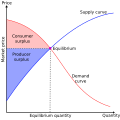Talk:Motherhood penalty
| This is the talk page for discussing improvements to the Motherhood penalty article. This is not a forum for general discussion of the article's subject. |
Article policies
|
| Find sources: Google (books · news · scholar · free images · WP refs) · FENS · JSTOR · TWL |
| This article is of interest to the following WikiProjects: | |||||||||||||||||||||||||||||||||||||||||||||||||||||
| |||||||||||||||||||||||||||||||||||||||||||||||||||||
Proposed changes
I would like to expand and revise upon this article on Motherhood Penalty. I would specifically be focusing on the perceived cultural tension between mothers and workers as well as the bias, discrimination, and wage gap the results from that tension. This entails expanding on the “Wage penalty for motherhood” section as well adding sections that focus on gender discrimination in the workforce, specifically discrimination against mothers. I will look at different theories that have been proposed to explain the motherhood penalty like the status characteristic theory, normative discrimination, and descriptive and prescriptive stereotyping. I would add a section on the “Effects of the motherhood penalty” with subsections “Wage penalty for motherhood”, “Hiring penalty for motherhood”, and “Promotion penalty for motherhood”. The second main section would be “Causes of the motherhood penalty” with subsections of “Employer bias”, “Status characteristics theory”, “Normative discrimination”, “Descriptive and prescriptive stereotyping”. The final main section would be on “Motherhood vs. fatherhood”. With subsections on cases studies and findings including Michelle Budig’s and Shelley Correll’s studies. I would also add more links to other articles like inequality in the workplace, working mothers, wage gap, discrimination, glass ceiling, etc. in order to increase traffic to this article. I would appreciate any comments or feedback. Mmcolson (talk) 18:12, 5 March 2013 (UTC)
This article seems to be in great shape. The suggestions that I have are generally very minor things that hopefully will help as you move towards completion. First of all, does the motherhood penalty exclusively apply to women in the U.S.? If so, you might want to consider either removing the leave policies graph altogether or incorporate discussion as to what makes U.S. policies so different. I was surprised that you only had one economic theory listed when that was an entire subcategory. I would suggest either adding another economic theory or removing that subcategory altogether and just putting "Human capital theory" as a possible cause of the motherhood penalty.
I was confused by the section on status characteristic theory. It seems to imply that this status comes from a classification of respect, but then goes on to say that mothers are penalized for being low-status. It would be very helpful if this section was more clear: are mothers suffering because of their high status? The section on normative discrimination seems to contradict itself: in two successive sentences, it says that highly successful mothers are less likable than nonmothers and then that they are not any less likable than nonmothers. Clarification of wording there could make a significant difference in understanding.
As I suggested above, I found the leave policies section somewhat problematic. I would recommend having a greater discussion of the graph, or potentially combining it with the maternity leave subsection. That section is the only one that deals with countries other than the U.S., making it confusing. Combining it with maternity leave might make room for a discussion of the differences on maternity leave between different industrialized countries.
Great job!Allisonraven (talk)


